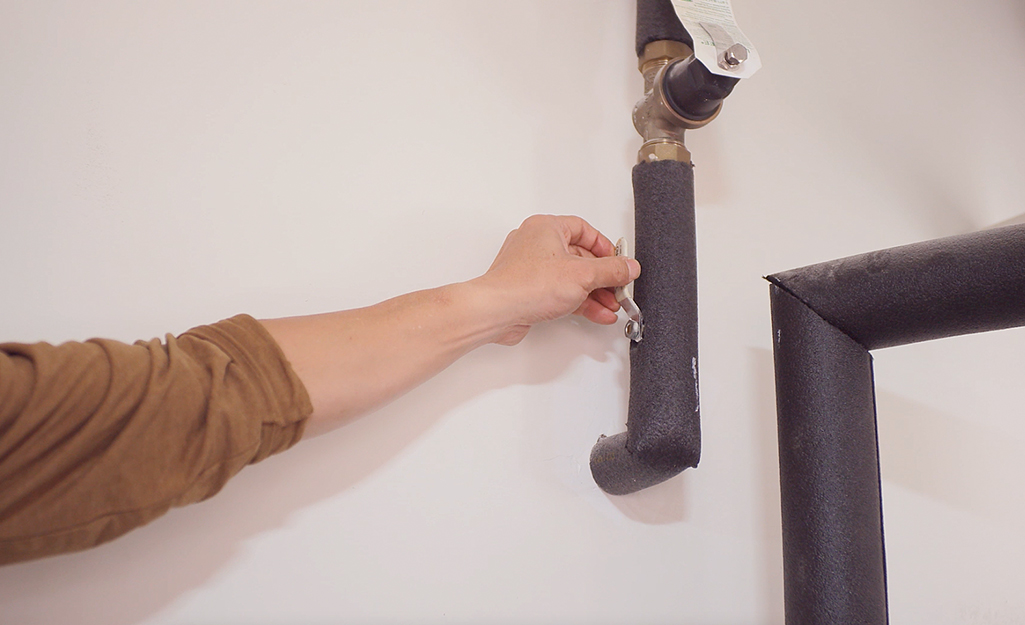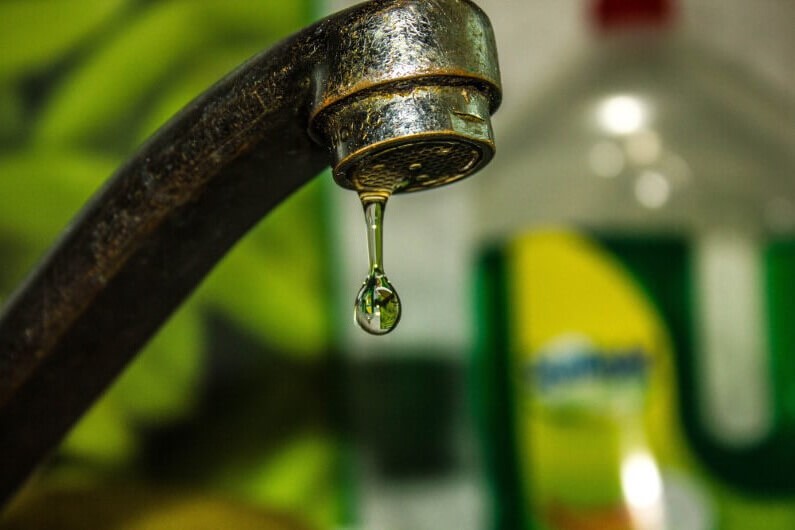Understanding the Relevance of Fixing a Faulty Faucet
Understanding the Relevance of Fixing a Faulty Faucet
Blog Article
We've encountered the article pertaining to Should I Repair or Replace a Leaky Faucet? directly below on the net and accepted it made perfect sense to share it with you on my blog.

Trickling taps may seem like a small inconvenience, however their impact exceeds simply the inconvenience of the noise. From drainage to sustaining unnecessary financial expenses and health dangers, disregarding a leaking tap can cause numerous effects. In this write-up, we'll delve into why it's crucial to address this common family concern immediately and effectively.
Wastage of Water
Ecological Effect
Leaking taps contribute significantly to water waste. According to the Environmental Protection Agency (EPA), a single tap dripping at one drip per second can squander more than 3,000 gallons of water per year. This not just strains water sources however additionally impacts communities and wild animals depending on them.
Step-by-Step Guide to Taking Care Of a Dripping Faucet
Tools Called for
Before attempting to deal with a dripping tap, gather the needed tools, consisting of an adjustable wrench, screwdrivers, replacement parts (such as washing machines or cartridges), and plumber's tape.
Usual Faucet Issues and Their Solutions
Recognize the type of tap and the specific problem creating the drip. Common troubles consist of worn-out washing machines, corroded valve seats, or damaged O-rings. Refer to maker guidelines or online tutorials for step-by-step support on repair services.
Financial Costs
Enhanced Water Expenses
Beyond the environmental influence, trickling taps can blow up water expenses significantly. The collected waste in time translates right into higher utility expenditures, which might have been prevented with timely repairs.
Possible Property Damages
Furthermore, prolonged leaking can result in harm to components and surface areas bordering the tap. Water accumulation can trigger discoloration, rust, and even architectural concerns if left ignored, causing extra repair prices.
Health Problems
Mold and Mold Development
The consistent presence of dampness from a dripping faucet develops a perfect setting for mold and mildew development. These fungis not just compromise indoor air high quality however additionally pose health dangers, specifically for people with respiratory system problems or allergic reactions.
Waterborne Conditions
Stationary water in trickling taps can come to be a breeding place for microorganisms and various other microorganisms, increasing the threat of waterborne conditions. Impurities such as Legionella germs prosper in stagnant water, possibly causing significant health problems when consumed or inhaled.
Do it yourself vs. Specialist Repair service
Advantages and disadvantages of DIY Repair Service
While some might try to deal with a dripping faucet themselves, DIY fixings come with their own collection of difficulties. Without proper understanding and tools, DIY efforts can intensify the concern or cause insufficient fixings, extending the trouble.
Benefits of Employing a Specialist Plumber
Hiring an expert plumber makes certain that the underlying cause of the leaking tap is resolved efficiently. Plumbing professionals have the knowledge and devices to detect and fix tap issues efficiently, saving time and reducing the danger of additional damage.
Environmental Obligation
Private Contribution to Conservation
Taking responsibility for fixing dripping taps straightens with more comprehensive initiatives towards water preservation and environmental sustainability. Every individual's activities jointly make a considerable impact on preserving priceless sources.
Sustainable Living Practices
By focusing on punctual repair services and embracing water-saving habits, people contribute to lasting living techniques that benefit both present and future generations.
Safety nets
Regular Upkeep Tips
To prevent trickling faucets, execute routine upkeep such as cleaning aerators, evaluating for leaks, and changing damaged parts promptly. Furthermore, consider setting up water-saving tools or upgrading to much more reliable fixtures.
Significance of Prompt Fixes
Addressing leaking faucets as soon as they're discovered stops more water waste and prospective damages, inevitably conserving both water and cash in the long run.
Impact on Residential Property Worth
Assumption of Well-Maintained Building
Keeping a residential or commercial property in good condition, including dealing with maintenance concerns like trickling taps, improves its perceived worth and charm among potential customers or lessees.
Impact on Resale Value
Qualities with well-kept plumbing components, consisting of taps, command higher resale values in the real estate market. Resolving dripping faucets can add to a positive impression during residential or commercial property examinations and arrangements.
Verdict
Addressing a dripping tap goes beyond mere benefit; it's a crucial step toward saving water, decreasing monetary expenses, and safeguarding health and residential or commercial property. Whether with DIY repair work or professional assistance, taking action to fix trickling taps is a little yet impactful way to promote liable stewardship of sources and contribute to a much healthier, extra lasting future.
How to Fix a Dripping or Leaky Faucet
A leaking faucet is one of the most common problems that homeowners encounter, but it being commonplace doesn’t make it any less annoying. The constant drip drip drip of a leaking bathtub faucet, showerhead, or sink tap can disturb your home’s serenity. Left neglected, a dripping faucet can also result in higher water bills and discoloration or mold growth in your sink or plumbing fixtures.
Fortunately, you don’t have to be a trained plumber to know how to stop a dripping faucet. With some basic tools, replacement parts, and a little patience, leaky faucet repair is a breeze. In this article, we’ll explain what causes dripping faucets and how you can fix them.
What Causes a Leaking Faucet?
Kitchen and bathroom faucets come in all manner of designs, but most involve some combination of valves, O-rings, seals, and washers. The O-ring is usually the weakest link, but any one of these pieces can wear down over time. Heat, moisture, temperature fluctuations, minerals, mold, and movement can contribute to warping and corrosion, breaking the watertight seal. This just comes with the territory of being a homeowner. Everything is always subject to wear and tear, and some component parts of your appliances and fixtures need to be replaced on occasion. At least replacement O-rings are cheap!
More rarely, dripping faucets can be a symptom of excessively high water pressure. Were this the case in your home, you would probably notice that the leak is not isolated to one faucet. Water pressure issues are harder to resolve on your own. We recommend contacting a professional plumber if you suspect your water pressure is too high.
How to Fix a Dripping Faucet
Pipe wrench or monkey wrench Allen wrench set Screwdrivers Old towel or rag Shut off the water.
Before you do anything, you need to turn off the water to keep from drenching your kitchen or bathroom. You should find a valve under the sink and against the wall. Once you’ve turned this valve, try turning the faucet on to confirm that the water source has been cut off.
If you can’t locate your local valve for the faucet you’re working on, you can always shut off the water to the house at the main valve. Of course, this will prohibit anyone from using the sinks, showers, or toilets while you’re working on the faucet that’s giving you trouble.
Plug or block the drain.
You’ll be disassembling the faucet and removing some small bits of hardware. Plug the drain with a stopper or rag to avoid the possibility of a small screw falling into your P-trap.
Take apart the faucet assembly.
There are several varieties of kitchen and bathroom faucets, each with its own manner of assembly. For detailed instructions on how to disassemble your faucet, you can refer to the fixture’s manual or contact the manufacturer. If you know whether you have a ball, disc, cartridge, or compression faucet, you can find detailed schematics online.
In general, you need to begin by removing the faucet handles. You might notice a small screw that you’ll need to remove with a screwdriver or Allen wrench. If you don’t see any visible securing hardware, it’s likely hidden under a decorative cap that can be unscrewed or popped off with flathead screwdriver.
Remove each piece methodically, consulting a schematic when necessary. Take notes or arrange the pieces in such a way to make it easier to correctly reassemble the faucet later.
Remove the cartridge.
Once you’ve removed the handles and securing hardware, you should be able to remove the valve cartridge or stem. Some cartridges will slide right out. Other faucet models will require you to loosen a nut with a pipe wrench before you can remove the valve stem.
Examine the exposed hardware.
With the cartridge or stem removed, inspect the component parts. Check the rubber O-rings for wear and tear. Also examine the seat washer for corrosion or other damage. These pieces are usually the responsible parties for a dripping faucet, but it’s worth inspecting the other component parts while you have the faucet disassembled.
Find replacement parts.
Once you’ve identified which faucet component has failed, find an identical replacement. Your local hardware store should have O-rings, seat washers, and other standard components in stock. If you have a luxury or uncommon faucet, you may have to contact the manufacturer for a replacement part.
It’s a good idea to take your old parts with you to the hardware store so you can compare them with the store’s inventory and be sure you’re purchasing the correct replacement.
Reassemble the faucet.
With your new parts in hand, reconstruct the faucet and handles. Don’t be tempted to overtighten screws or nuts. You might think this could create a better seal, but it can instead damage or bend a delicate part of the assembly and create a new problem for you.
Turn on the water and test the faucet.
The only thing left to do is test your work. Unplug the sink, turn the water back on, and try the faucet. Congratulate yourself on a job well done!
https://www.libertyhomeguard.com/how-to-fix-a-dripping-or-leaky-faucet/

Do you enjoy reading about Why Is It Important To Fix Your Leaking Tap/Faucet?? Create a remark further down. We'd be pleased to see your opinion about this posting. We are looking forward that you visit us again before long. In case you liked our blog posting if you please consider to share it. Thanks a lot for your time. Please stop by our site back soon.
Report this page